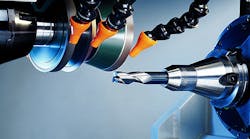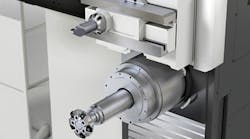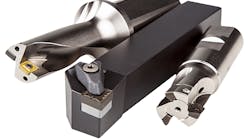U.S. manufacturers’ consumpton of cutting tools rose 5.8% from May to June, totaling $175.35 million, but the overall market conditions continue to be difficult. The latest figure is down 7.1% year-on-year, and the cumulative total for U.S. cutting-tool consumption for the first six months of 2016 is $1.03 billion, 8.8% lower than the consumption total at midyear 2015.
These figures are drawn from the monthly Cutting Tool Market Report, Cutting tool consumption is tracked by the U.S. Cutting Tool Institute (USCTI) and AMT – the Association for Manufacturing Technology in the monthly Cutting Tool Market Report (CTMR.) The report includes data from a majority of the cutting-tool manufacturers and distributors in domestic manufacturing. As cutting tools are a primary consumable product involved in the production process for multiple industrial sectors, the report provides an up-to-date index to U.S. manufacturers’ overall activity.
“Certainly, seeing a jump in shipments between May and June is welcome news but we saw this same event last year only to be disappointed again by July shipments,” commented Steve Stokey, president of USCTI. “All indicators continue to point to a weak outlook as we search for a bottom to the current trend.”
The less-than-robust manufacturing conditions were apparent also in the mid-year report on new machine-tool orders, which is also reported by AMT. That group revised its outlook for 2016 machint-tool orders, and now predicts the total will fall below the 2015 result.
“U.S. manufacturing continues facing strong headwinds due in part to a slowly expanding economy and a relatively strong value of the U.S. dollar,” stated Bill Strauss, senior economist and advisor at the Federal Reserve Bank of Chicago, in comments supplied by USCTI and AMT. “The auto industry continues to out-perform and appears to be more resilient to these headwinds, while machinery and metal producers have struggled, although it appears that even these sectors may be at a nascent stage of recovery.”











